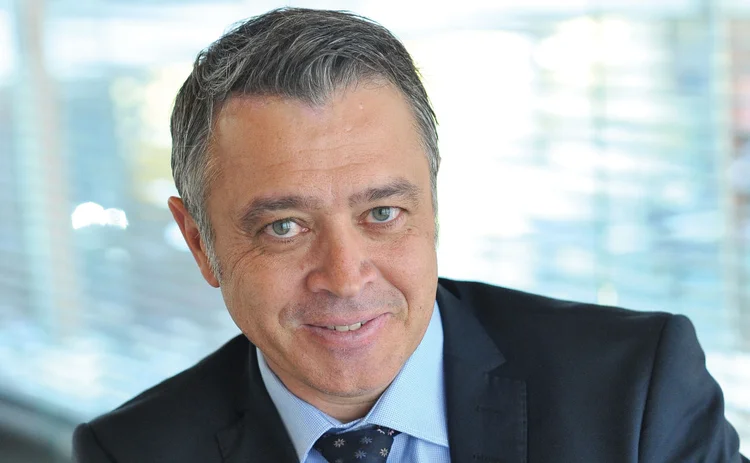
Standard Bank looks to remain the go-to bank in Africa
Standard Bank wins Best Bank for the South African Rand and African Currencies at the 2016 FX Week Awards

Standard Bank has never been afraid of setting big targets for itself and this year was no different. Back in 2013, when the South African bank first won the Best Bank for the South African Rand category at the FX Week Best Banks Awards, its goal became bigger: to be the best provider of African currencies across the continent.
"We've been able to test the strategic direction of being the go-to bank for currencies in Africa," says Richard de Roos, head of foreign exchange at Standard Bank. "The portfolio we are involved in has quite a diverse FX business, and from that point of view, we try to apply ourselves across each of those markets appropriately, while at the same time benchmarking our capabilities, our skills and our tools against global best practice."
This year, Standard Bank once again bagged the category for the rand while also winning Best Bank for African Currencies, excluding ZAR.
To qualify as a regional specialist with a global reach, we have to do everything we can to succeed in the local domestic franchises as a starting point
Richard de Roos, Standard Bank
The recipe for success is a simple strategy, says de Roos: "In order to qualify as a regional specialist with a global reach, we have to do everything we can to succeed in the local domestic franchises as a starting point, so that we can then fuel the liquidity to the most relevant international markets, wherever these currencies might trade."
Different markets require different strategies, and technology often helps to integrate the two, especially when liquidity is scarce. Earlier this year, Standard Bank partnered FX technology provider TradAir to increase its presence as a market-maker for the rand on the continent. Under the deal, the South African bank agreed to deploy TradAir to all 18 of its regional dealing centres in Africa, where traders can then create tailored pricing streams for their clients.
"From a technology perspective, we've been pleased with the initiative we've been able to roll out this year, including our investment in TradAir. We are very pleased with the access to some of the liquidity we have been able to achieve, as well as some of the market-making tools we've been able to deploy," says Tim Hutchinson, head of e-FX trading at Standard Bank.
"The technology tools we apply are measured against the appropriate liquidity realities in each of those 18 countries as they evolve. We then use them to redistribute pricing electronically to our rate engines, and ultimately into the venues we choose to provide that liquidity to," adds de Roos.
This applies equally to countries where liquidity issues are relatively small, such as Kenya, Uganda, Botswana and Mauritius, as well as those with bigger pressure points, including Nigeria, Mozambique and Gambia. Working in this diversified environment "becomes part of the way you operate in frontier markets, with all the implications of taking risks in markets where liquidity is not available", says Hutchinson.
As for the bank's home country, it has been a rough year for the South African rand, rattled by the ongoing battle between president Jacob Zuma and finance minister Pravin Gordhan for control of the ruling African National Congress.
From a technology perspective, we've been pleased with the initiative we've been able to roll out this year, including our investment in TradAir
Tim Hutchinson, Standard Bank
"We had a year where we had USD/ZAR moving in both directions. Looking at where the rand has been trading over the past 12 months, with USD/ZAR going all the way up to 17 and then down to 13, you can see the range of this event risk," says de Roos.
To be relevant in G10 currencies where traded volumes are the highest, market-makers have to do two things: provide the deepest liquidity at the lowest latency. But outside G10, the requirements are different.
"In the rand market, where internalisation does not occur at the 90 to 95 level, because of less liquidity, we obviously have to focus on the differentiators and on the benefits of having strong liquidity domestically," says de Roos.
"In 2017, we will focus on supporting our clients in their objectives and strive to remain the go-to bank for Africa," he adds.
Click for editor's introduction, list of interviews and awards tables
Only users who have a paid subscription or are part of a corporate subscription are able to print or copy content.
To access these options, along with all other subscription benefits, please contact customer services - www.fx-markets.com/static/contact-us, or view our subscription options here: https://subscriptions.fx-markets.com/subscribe
You are currently unable to print this content. Please contact customer services - www.fx-markets.com/static/contact-us to find out more.
You are currently unable to copy this content. Please contact info@fx-markets.com to find out more.
Copyright Infopro Digital Limited. All rights reserved.
As outlined in our terms and conditions, https://www.infopro-digital.com/terms-and-conditions/subscriptions/ (point 2.4), printing is limited to a single copy.
If you would like to purchase additional rights please email info@fx-markets.com
Copyright Infopro Digital Limited. All rights reserved.
You may share this content using our article tools. As outlined in our terms and conditions, https://www.infopro-digital.com/terms-and-conditions/subscriptions/ (clause 2.4), an Authorised User may only make one copy of the materials for their own personal use. You must also comply with the restrictions in clause 2.5.
If you would like to purchase additional rights please email info@fx-markets.com
More on Awards
FX house of the year G10 (Asia hours): Wells Fargo
In just a few years, Wells Fargo’s FX volumes in Asia have strengthened and, with a robust FX product offering, the bank expects to onboard more clients eager for cross-currency swaps and customised pricing
Best FX market data and analytics provider for Asia currencies: oneZero
Committed to growing its client base, oneZero has released various features within its data and analytics offering to help FX clients solve specific challenges in their respective markets
Asia Awards 2025: The winners
The FX Markets Asia Awards recognise and showcase the best banks, trading platforms and technology providers in the Apac region.
J.P. Morgan brings greater transparency to the overlay space
Demand for J.P. Morgan’s FX overlay market services has risen significantly as market participants navigate the hedging and execution complexities of the market
Best prime-of-prime broker: Saxo
With its well-rounded offering and solid balance sheet, Saxo stood out as a trusted liquidity partner, regardless of market conditions
OSTTRA tackles FX risk with new settlement orchestration and expanded optimisation tools
OSTTRA has added settlement orchestration to its suite of FX services to help clients optimise their derivatives portfolios and tackle critical challenges in the market
Best trading technology for FX: smartTrade Technologies
As sell-side market participants more readily accept the integration of machine learning and AI into their processes, smartTrade Technologies unveils advanced services and modules that provide clients with powerful tools to maximise trading efficiency
Best liquidity aggregation service: smartTrade Technologies
With more sophisticated workflows at their fingertips, second-tier market participants are capitalising on smartTrade Technologies’ bespoke services and modules to gain a competitive edge








